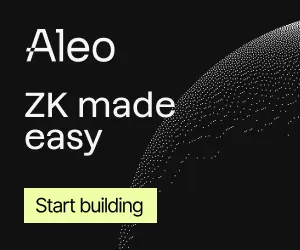A day after Arbitrum’s public airdrop, another Ethereum scaler is launching its own offering.
Matter Labs’ zkSync Era is now open to users to begin bridging and using the layer-2 technology.
It’s the final step in a phased mainnet launch that began in 2019.
Rollups allow Ethereum to scale by moving transactions off of the mainnet, and onto a layer-2 network like zkSync. Users can then go about their business on this second network, with transactions being batched and compressed into a small piece of data called a proof. This proof is then sent back to Ethereum and verified.
Today’s zkSync launch does, however, come with a word of warning.
“It will definitely be an alpha version of the system,” Matter Labs head of engineering Anthony Rose told Decrypt. “We're not claiming this is the system that we expect it to be either 2 or 3 years from now. There’s lots and lots more engineering work to do. But this is the core skeleton of the zkEVM.”
A zero-knowledge Ethereum Virtual Machine, or zkEVM, is another core aspect of zkSync’s scaling product. The team is implementing a version of rollup technology that draws from zero-knowledge cryptography, hence the “zk,” rather than so-called optimistic rollups. ZkSync’s virtual machine thus allows for this complex cryptography to be easily integrated with Ethereum as it exists today, tried and battle-tested.
zkSync’s defense mechanisms
Though the gates are open to permissionless onboarding, with various constraints lifted, Rose explained that there will still be a few key security measures in place.
The most notable will be delayed withdrawals from zkSync’s bridge technology. Because zkSync is a layer-2 solution, users must bridge their funds from Ethereum to zkSync. This means using a proprietary bridge built by Matter Labs to make these transfers possible.
“This is the point where, honestly, if there's one place where I felt like the most acute risk, it is probably this,” said Rose. “It's really just because of what we've seen over the last few years in the ecosystem where this [bridges] has been a serious point of weakness.”
Bridge exploits have led to some of the industry's biggest losses, with the most notable being the $622 million hack of Axie Infinity's Ronin bridge last year.
“They won't be instantaneous on day one. Because we want to be in a position where if the worst happens, and there is a major security incident, we want users to know that we've got the ability to mitigate a bad actor,” said Rose.
Users will instead have to wait one day to execute their withdrawals but Rose said his team would be “relaxing that” feature over the coming months.
After non-instantaneous withdrawals, zkSync has also teamed up with security auditors OpenZeppelin, among others.
“As part of that, we've been working a lot on a very sophisticated monitoring platform,” Rose told Decrypt. “Monitoring on-chain activities, monitoring off-chain activities, monitoring across on-chain and off-chain. Does the amount that you think has been breached into your system by the smart contract layer correspond to how much you see in a database?”
Still, nothing, especially in crypto, is foolproof.
But now it's time to get the product out in the wild, he said.
"We've spent millions of dollars on audits, bug bounties, public contests, private reviews," said Rose. "At some point, you do cross that competence threshold and say, 'Okay, I think we're ready.'"



